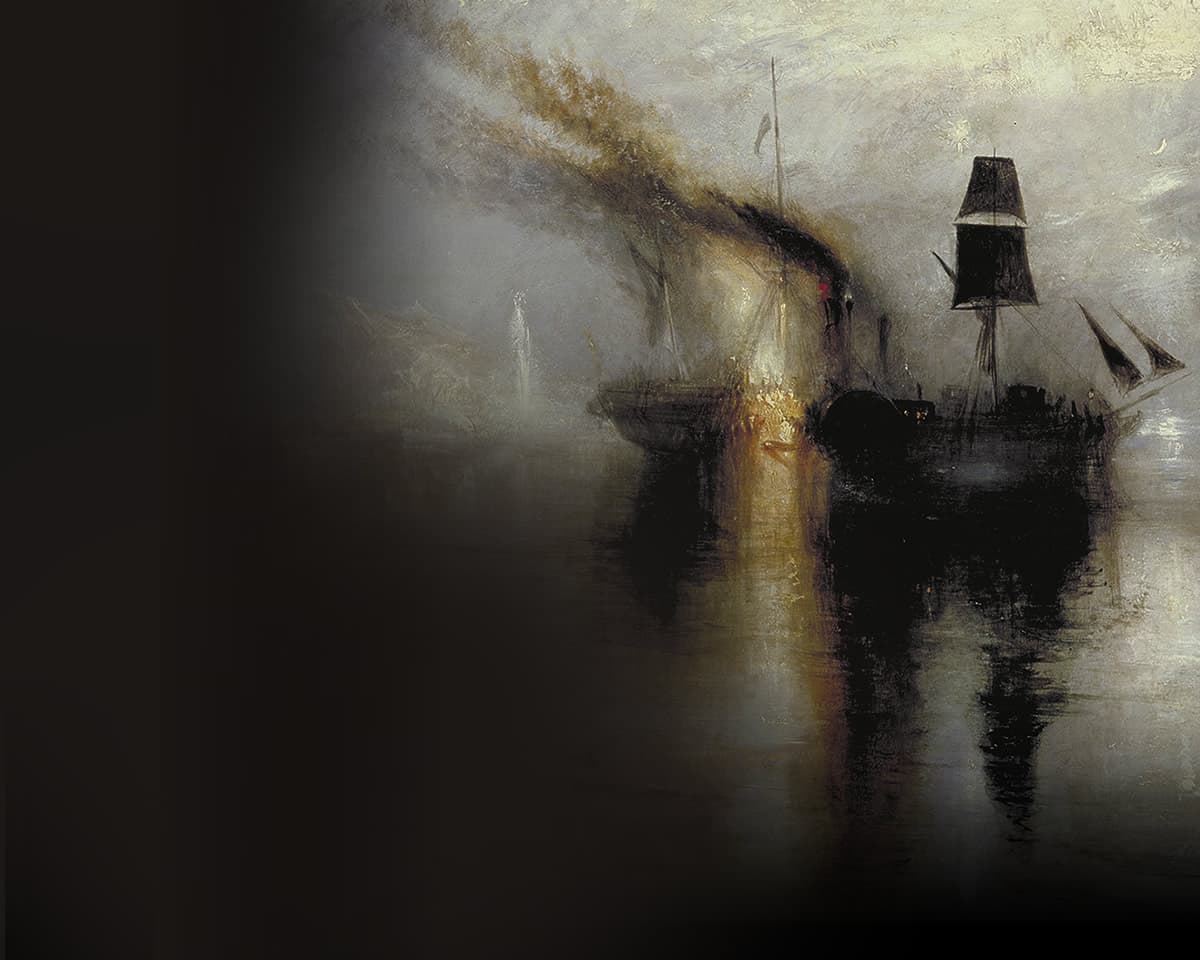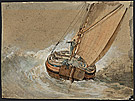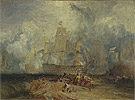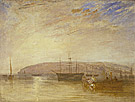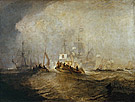Turner and the Sea
The sea is a dominant subject for Turner, from his first oil paintings at the Royal Academy to his final dramatic seascapes. His depictions frequently look back to the great Dutch marine traditions of the seventeenth century, although Turner’s bold and expressive handling of paint was completely unlike that of earlier masters.
From the 1830s onwards his interest in maritime subjects increased, culminating in a series of dark and melancholic seascapes with storms, shipwrecks or ghostly whaling ships. A crucial influence was the time Turner spent at the seaside resort of Margate, on the eastern tip of southern England. From the comfort of his lodgings there he could watch the changing light over the sea, or surging waves pounding the harbour walls. Many of the works painted at Margate came to light after his death, and were not displayed until the early twentieth century.
